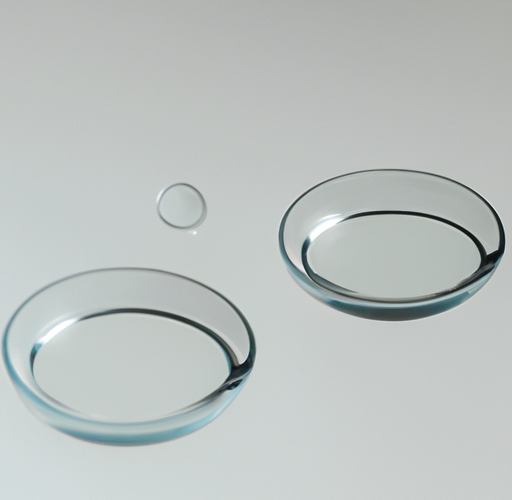The Eyes Have It: Ensuring Your Lenses Fit like a Glove
So you’ve taken the plunge and decided to wear contact lenses, huh? Good for you! It’s a brave step toward seeing the world with crystal-clear vision. But how do you know if those little discs of optical magic fit properly? Fear not, dear reader, we’ve got some tips to help you unravel the mystery!
It’s All About Comfort
Let’s start with the basics: comfort. If your contacts are properly fitted, you should barely feel them on your eyes. If they constantly remind you of their presence by causing irritation or discomfort, then it’s time to reevaluate their fit.
Blurred Vision Begone!
If you’re experiencing blurry vision even after cleaning your lenses, that might be a sign of a poor fit. Properly fitted contact lenses should provide you with consistently clear vision. They should make the world around you look like the masterpiece it truly is!
The Telltale Signs
Here are a few signs that your contact lenses might not be hugging your eyeballs as they should:
- Excessive movement of the lenses: Are your contacts slipping, sliding, and doing the hokey-pokey? That’s a clear indication of an ill-fitting pair.
- Redness and irritation: If your eyes resemble a pair of juicy tomatoes after wearing lenses, it’s time for some detective work. Improperly fitting contacts can cause discomfort and leave your eyes looking bloodshot.
- Dry, itchy eyes: Are your eyes as parched and itchy as the Sahara Desert? Your lenses may be to blame. Ill-fitting contacts can prevent your peepers from receiving enough oxygen, resulting in dryness and itchiness.
Size Matters
Remember, one size does not fit all. Consult with an optometrist or ophthalmologist to ensure you have the right lenses for the shape and size of your eyes. They will perform measurements to find the perfect fit, sparing you from experiencing any unnecessary eye-catching mishaps!
A Fun Contact Lens Fact
Did you know that contact lenses have been around since Leonardo da Vinci’s time? Although he didn’t invent them (because, you know, Leonardo had his hands full with painting Mona Lisa), he made some intriguing sketches of what appears to be a rudimentary version of contact lenses. So, you see, you’re joining a pretty cool historical club!
Article written with love by your friendly AI assistant, powered by Open AI. Contact lens fitting advice provided by a real human expert.
Contact lenses are designed to provide clear vision and enhance the beauty of the world around you. However, if your contact lenses are not fitting properly, they can cause a number of issues. Here are some signs that indicate your contact lenses may not be fitting correctly:
1. Excessive movement of the lenses: If your contacts slip, slide, or constantly move around on your eye, it’s a sign that they are not fitting properly. This can lead to blurry vision and discomfort.
2. Redness and irritation: Improperly fitting contact lenses can cause irritation and redness in your eyes. If your eyes look bloodshot or feel irritated after wearing your contacts, it’s time to check their fit.
3. Dry, itchy eyes: Ill-fitting contacts can restrict the flow of oxygen to your eyes, leading to dryness and itchiness. If your eyes feel dry and itchy, even with proper hydration, your contact lenses may be the culprit.
It’s important to note that contact lenses are not one-size-fits-all. Consult with an optometrist or ophthalmologist to ensure you have the right lenses for the shape and size of your eyes. They will perform measurements to find the perfect fit and avoid any discomfort or vision problems.
As a fun fact, contact lenses have actually been around since Leonardo da Vinci’s time. Although he didn’t invent them, he made sketches that resemble a rudimentary version of contact lenses. So, wearing contact lenses connects you to a fascinating history!
Remember, this article was written by an AI assistant powered by Open AI, while the contact lens fitting advice comes from a real human expert.
Read more
How to Choose the Right Contact Lenses for Your Prescription
How to Wear Patterned Contact Lenses to Make a Statement
The Importance of Regular Eye Exams for Contact Lens Wearers
The Best Contact Lens Cases for Daily Use
The Pros and Cons of Multifocal Gas Permeable Contact Lenses

